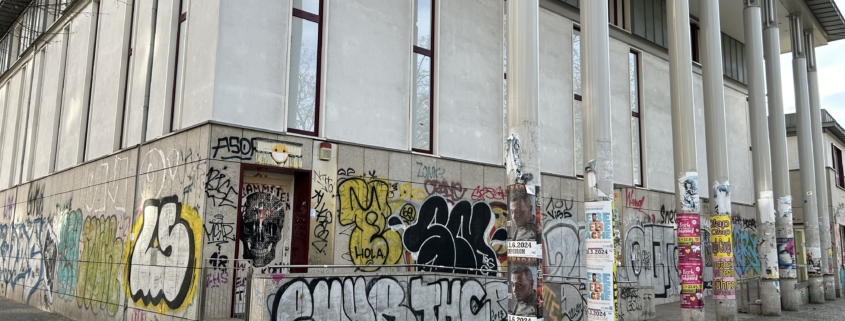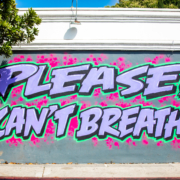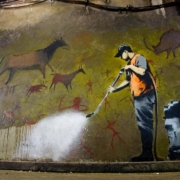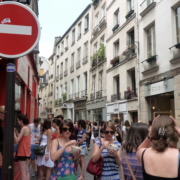Deconstructing the diffusion of contemporary graffiti to major cities around the world
Over the past four decades, one of the most interesting things that occurred in the urban visual landscape, has been the presence of graffiti (and street art). This form of public art has happened in big cities, in all regions and countries, throughout the world regardless of climate, geography, and political systems that govern them.
Why is this important?
The emergence of graffiti and street art in different cities is often a reflection of the cultural identity, social dynamics, and street culture of neighborhoods located in a particular urban environment.
By studying the emergence of graffiti (and street art) in a particular urban setting, we can gain insights into the urban culture, values, and concerns of different communities.
Graffiti/street art is sometimes a form of artistic expression that challenges traditional notions of art and public space. It allows individuals and groups to voice their opinions and engage with their surroundings in creative ways.
Many contemporary graffiti and street art pieces convey powerful social and political messages. By analyzing these artworks, especially the early ones, we can better understand the issues and struggles faced by individuals and communities in urban environments.
Graffiti and street art has also become a major tourist attraction in many cities, drawing visitors who are interested in all manner of urban art and urban culture.
Graffiti/Street Art can have significant impacts on urban planning, urban public space, and policy decisions. Cities often grapple with questions of whether to embrace graffiti/street art as part of their cultural heritage or to treat it primarily as vandalism. Understanding its spread can inform policy-making in areas such as public art initiatives and graffiti removal strategies.
In some cases, graffiti and street art can serves as a tool for community engagement and empowerment. By involving local residents in the creation of urban public art, cities can foster a sense of ownership and pride in public spaces.
Questions begging to be answered
Nevertheless, this phenomenon raises numerous interrelated and intriguing questions:
- When did graffiti (and street art) emerge in these cities?
- What factors propelled its appearance?
- Why were individuals participating in it?
- Where was graffiti/street art placed?
- What unique styles emerged in these contexts?
- Did unique practices arise in these locations, and if so, what were they and why?
- How did the patterns here compare to those in different cities worldwide?
- Who engaged in graffiti and later street art?
- How pervasive was the graffiti/street art and is it still prevalent?
- What effects or responses did it have?
Answering these questions not only serves as an intellectual exercise, but should help us to understand the globalization of graffiti and street art. The results of such a study could be of interest not only past and present graffiti writers but also enthusiasts and experts in various fields, including art history, graffiti and street art studies, subculture analysis, legal studies, urban history, urban space, and urban studies.
Although significant scholarly research has explored the emergence of graffiti in the United States, fewer academic studies have analyzed its diffusion in other countries. These investigations, however, are equally vital because, like many phenomena, there have always been cross-national conversations among graffiti writers who traveled overseas.
Unlike today with the existence of the World Wide Web and multiple electronic communication channels, the early diffusion of graffiti culture was encouraged through various means, including the screening of documentaries like Wild Style, (1983) and Style Wars (1983), publication of Martha Cooper and Henry Chalfant’s book Subway Art (1984), and distribution of numerous zines dedicated to graffiti.
Additionally, mobile youth culture, especially among Americans, Australians, Europeans, and New Zealanders aged 18 to 35, played a significant role in the diffusion of graffiti. Many of these people backpacked around the world, observing and participating in graffiti culture in different countries, contributing to its global spread.
Where do things stand?
Predictably there are numerous gaps in the English language literature on the diffusion of graffiti outside of the United States. Specifically, although some aspects of this type of public urban art form were covered in popular media such as newspapers and magazines, comprehensive information is often relegated to more obscure publications, such as graffiti zines, which may reside in archives or private collections. Complicating matters further, many early participants in foreign graffiti scenes have either passed away, relocated from their original cities, or become inaccessible due to disability. Consequently, firsthand accounts from these pivotal figures are challenging to obtain.
To address these gaps, and keeping in mind that some urban environments are more pivotal in the growth of graffiti and street art, it’s important to research, write and publish detailed, thoughtful and engaging case studies examining the emergence of graffiti and street art in major cities worldwide. Such studies are crucial for comprehending the cultural significance and societal impact of this art form not only locally but on a global scale. Additionally, researchers should prioritize making their findings accessible in a variety of languages. By facilitating translation efforts, for example, we can promote greater cross-cultural understanding and appreciation of graffiti as a significant public art form.
Photo credit
BSC Eintracht/Sudring 1931 e V, Berlin
Photographer: Jeffrey Ian Ross, Ph.D.











